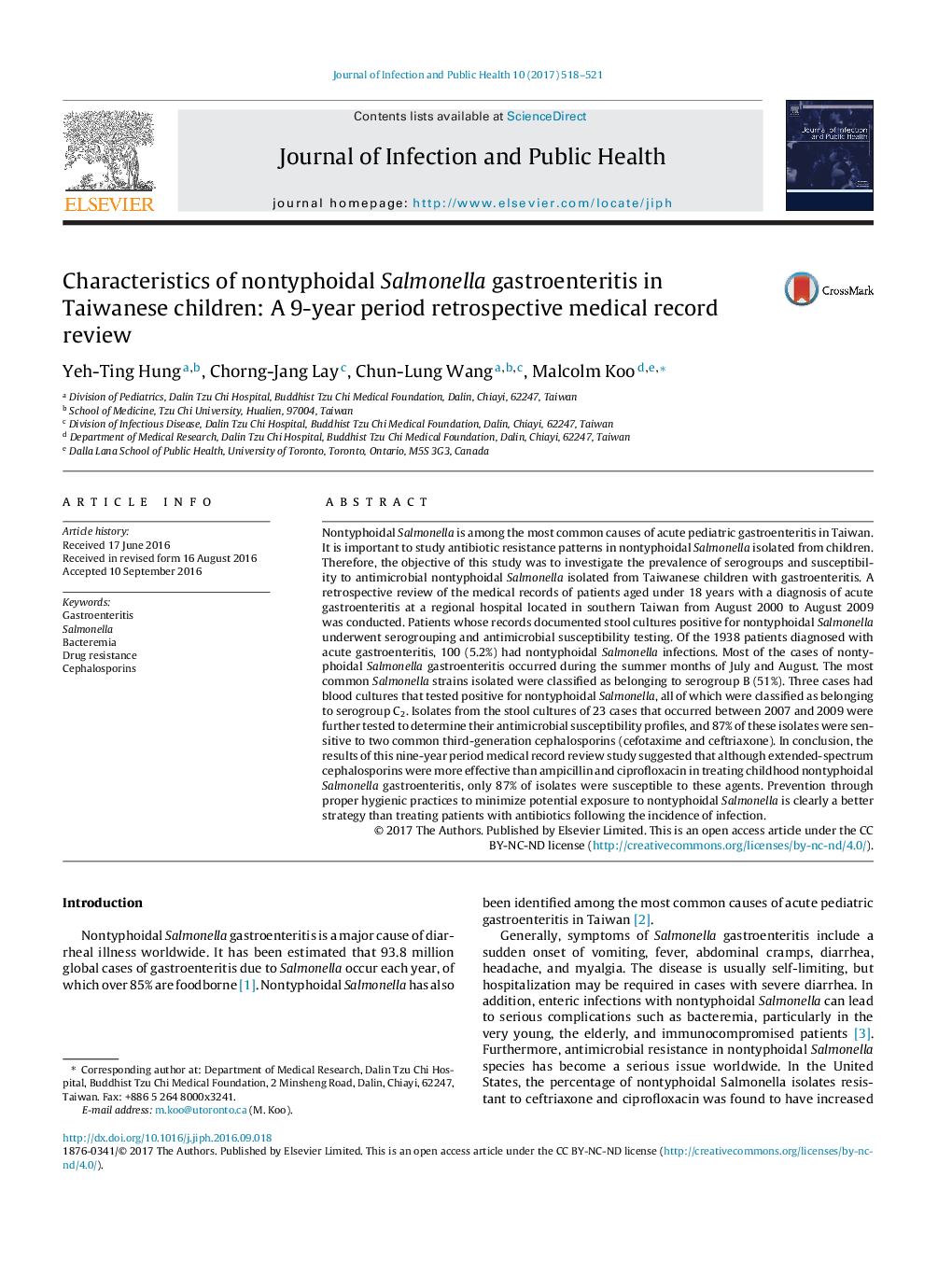| Article ID | Journal | Published Year | Pages | File Type |
|---|---|---|---|---|
| 5672740 | Journal of Infection and Public Health | 2017 | 4 Pages |
Nontyphoidal Salmonella is among the most common causes of acute pediatric gastroenteritis in Taiwan. It is important to study antibiotic resistance patterns in nontyphoidal Salmonella isolated from children. Therefore, the objective of this study was to investigate the prevalence of serogroups and susceptibility to antimicrobial nontyphoidal Salmonella isolated from Taiwanese children with gastroenteritis. A retrospective review of the medical records of patients aged under 18 years with a diagnosis of acute gastroenteritis at a regional hospital located in southern Taiwan from August 2000 to August 2009 was conducted. Patients whose records documented stool cultures positive for nontyphoidal Salmonella underwent serogrouping and antimicrobial susceptibility testing. Of the 1938 patients diagnosed with acute gastroenteritis, 100 (5.2%) had nontyphoidal Salmonella infections. Most of the cases of nontyphoidal Salmonella gastroenteritis occurred during the summer months of July and August. The most common Salmonella strains isolated were classified as belonging to serogroup B (51%). Three cases had blood cultures that tested positive for nontyphoidal Salmonella, all of which were classified as belonging to serogroup C2. Isolates from the stool cultures of 23 cases that occurred between 2007 and 2009 were further tested to determine their antimicrobial susceptibility profiles, and 87% of these isolates were sensitive to two common third-generation cephalosporins (cefotaxime and ceftriaxone). In conclusion, the results of this nine-year period medical record review study suggested that although extended-spectrum cephalosporins were more effective than ampicillin and ciprofloxacin in treating childhood nontyphoidal Salmonella gastroenteritis, only 87% of isolates were susceptible to these agents. Prevention through proper hygienic practices to minimize potential exposure to nontyphoidal Salmonella is clearly a better strategy than treating patients with antibiotics following the incidence of infection.
